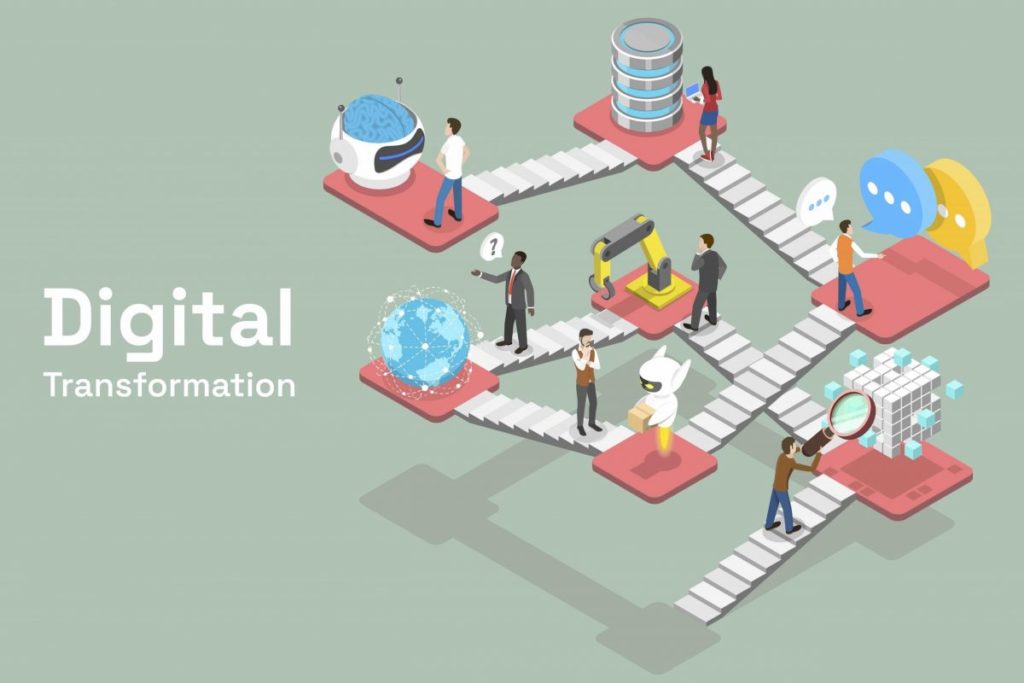Over the past 2-3 years, businesses have been awakened by “Digital Transformation” in order to make changes to survive and to be sustainable regarding digital disruption by applying digital technology to all sectors of the organization, embracing digital technology to make changes from the foundation to the delivery process and in customer service to serve the 4.0 era to meet needs and behaviors. However, many people are still confused and misunderstand this, making it impossible to truly step into success.
When it comes to the term “Digital Transformation,” most people think of embracing technology to bring about changes to the organization, but in order to achieve Digital Transformation it is necessary to look more deeply than that, especially in relation to processes and the conceptual framework of Digital Transformation or “DX” which is planning for transformation.
A “Design Thinking” approach, starting from the company structure and tools, including the ideas or the mindsets of people in the organization, will focus on understanding the organization, knowing the needs and resources and the assets of the organization, as well as having knowledge and the understanding of technology to adjust thinking before seeking suitable solutions to be used as tools to help make changes, ranging from blockchain, to AI or the metaverse.
Hence, to do “DX”, an organization needs to know three main things: what are the organization’s most valuable assets? This is an easy question but which can be difficult to answer since answers will not be the same. How much knowledge about changing technology and about the target audience does the organization have? This helps in planning to bring assets to generate revenue by choosing the most suitable technology that can connect with customers and respond to customer needs more efficiently.
It is important that organizations should consider whether to do “DX” or not? The financial status of the organization should remain positive, not negative, but it needs to change since this process requires an initial investment and this is not a single lump sum payment. It may be more or less, depending on the cost of introducing technology systems and learning to help the organization save costs and reduce time. Although everyone knows that change is needed today, the overall success of “Digital Transformation” in Thailand is very small.
The major constraint is the mindset of management and the team which needs to change in two main areas. The first is the fear of change, especially organizations that are already good and often do not dare to change. But now consumer behavior is changing very quickly and every business needs to adapt to keep up. The second is the misunderstandings between different generations, especially the Alpha Generation that is growing to be important customers in the future. There is also the issue of fundamental technology change.
Meanwhile, the success factor for “Digital Transformation” is knowing yourself and daring to change because this is an era that requires agile work or a process to think about providing a faster response to customers.
Hence, it is necessary to dare to change and experiment even if you do not know the outcome. Otherwise, you will never know what effect the change will have and thus organizations will be able to withstand the shocks, not just from digital technology, but from other uncertainties and they must be ready to adapt to change over time.
J Ventures’ DX transformation for the Jay Mart Group is an example of successful Digital Transformation by daring to transform, reflected by the synergy and the start of business transformation in 2015, before entering the era of “Digital Disruption.”
Another factor is that the mindset of the team has been changed to an organizational culture which is different from organizations that have never adapted before which makes transformations with technology more difficult. The way J. Ventures brings technology to create and develop a digital platform also allows for more interaction with customers, including joining forces with TIS Intec Group, Japan where TIS has brought various technologies and use cases to help enhance DX for business transformation.
Another very important factor in enabling the Jaymart Group to achieve “Digital Transformation” successfully has been the vision of executives who want to drive the organization towards the goals of the team to make it ready to be open to change. Although, there may be opposition in the beginning, many organizations may still be confused with “Digital Transformation” due to the impact from technology that can rapidly change consumer behavior in the 4.0 era, including differences between generations that become the main variant factor that changes everything completely from the 3.0 era. The most important thing is to realize that change is not a business choice but is in order to survive sustainably in the future.
Source: Chomchaviwan
